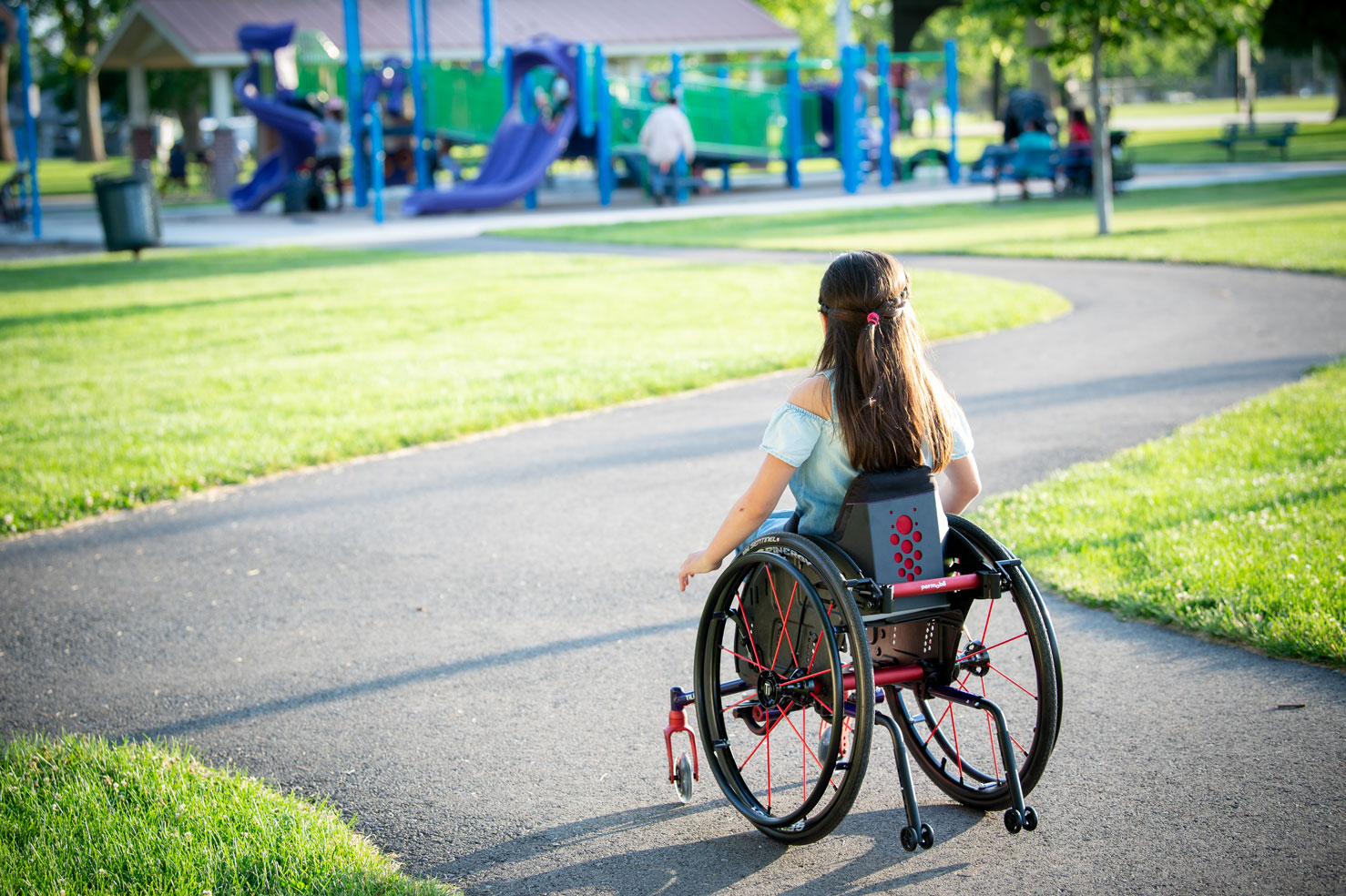Our last three webinars for 2020 are looking at funding and how to write successful funding reports. Writing reports is a skill that some of us struggle more with than others, where understanding what information is vital to the funding report can be a challenge. In today’s blog we are taking a look at the WhOM and how it can assist with writing funding reports.
Writing funding reports for wheelchairs can seem simple on the surface – a person is unable to walk, or does not have functional mobility, hence requires a wheelchair. However the world of wheelchairs is not so simple, with wheelchairs being available in all sorts of sizes, configurations and with different features, and hence we need to be able to communicate to the funders why a particular chair at a particular cost is essential to meet a person’s needs.
In a previous role I worked as a Paediatric Physiotherapist, and worked closely with the local Orthotist, a very experienced person who was often very direct with his thoughts, and often in our joint appointments he would ask me outright – Rachel, what are we wanting to achieve here? Which brings me back to the WhOM.
For those who are new to the WhOM – the WhOM is an outcome measures that focuses on participation – often the ICF domain that is most meaningful to end users. The WhOM can be a means of establishing ‘what are we trying to achieve’ with a wheelchair, where mobility is expanded from moving from point A to point B, to ‘I want to be able to go into town without my parents’ or ‘I want to be able to cook my own meals’. For our younger wheelchair users and their families, there is a modified version – the WhOM-YP.
The goals identified through the WhOM will be as diverse as the range of people we work with, and some of these goals will relate to funding guidelines, while others won’t – but each goal deserves to be acknowledged.
The WhOM asks a person to score each goal on how important it is to them, and how satisfied they are with how they complete each goal. Asking a person to rate how important a goal is to them can help differentiate between a goal that has been identified by another person (eg a caregiver or support worker) and what is meaningful to them, as well as prioritise intervention if different goals contradict each other – for example indoor and outdoor goals that are not able to be achieved in one mobility solution. Asking a person to rate how satisfied they are with how they perform each goal will hopefully give you the opportunity to demonstrate that your intervention was effective – as their satisfaction score will hopefully improve post intervention.
How well the WhOM influences the outcome can depend on what we do next. The WhOM has helped us identify what we want to achieve, the next step is to work through is how we will achieve it. Once we have established our goals we then need to work through each goal and analyse what is required to achieve it. For our young person who is wanting to go to town on his own, it may be that we are looking at power assist for their manual chair, or time spent on improving wheelchair skills to manage on/off busses or crossing the road safely and independently. For our person who is wanting to cook meals independently we may be looking at ActiveReach or power standing, or adaptive equipment and strategies to compensate for reduced hand function. In other words, while the WhOM is an outcome measure that is designed for wheelchair users, the intervention that results from completing it may or may not be related to the wheelchair.
This analysis often provides information to support a funding request – for example our person who is wanting to cook, as part of analysing this goal we have looked whether the person can access their kitchen in their wheelchair, confirmed that they have the hand function to complete the required tasks safely (with or without assistive equipment), they have the range of movement in their legs for ActiveReach, and alternative options have been considered, such as whether a caregiver is required to assist. Failing to complete this analysis typically results in funding reports that are lacking in information – and remember, the person who is reviewing the funding report has not met the person who requires the wheelchair – hence if the report does not contain the required information the funding body will not be able to support funding for what can be a high cost solution.
Ultimately everyone involved in the wheelchair prescription and funding process is wanting to facilitate good outcomes for end users, our role as therapists is to be able to identify what these good outcomes might look like and communicate how a piece of equipment is going to achieve them in our funding reports.
The WhOM manual and assessment form is freely available online, for more information please see https://millerresearch.osot.ubc.ca/tools/mobility-outcome-tools-2/the-wheelchair-outcome-measure-whom/
Rachel Maher graduated from the University of Otago in 2003 with a Bachelor of Physiotherapy, and later gained her Post Graduate Diploma in Physiotherapy (Neurorehabilitation) in 2010.
Rachel gained experience in inpatient rehabilitation and community Physiotherapy, before moving into a Child Development Service, working with children aged 0 to 16 years.
Rachel later moved into a Wheelchair and Seating Outreach Advisor role at Enable New Zealand in 2014, complementing her clinical knowledge with experience in NZ Ministry of Health funding processes.
